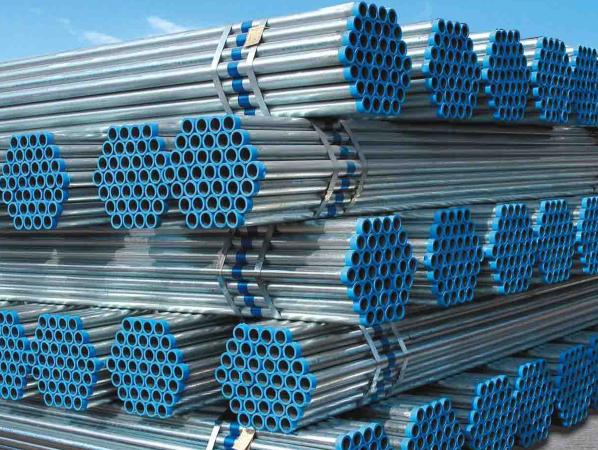
Before steel pipes are galvanized, they need to be pretreated. First, clean the oil and impurities on the surface of the steel pipe to ensure that the zinc layer can be firmly attached to the surface of the steel pipe. Secondly, the steel pipe is pickled to remove oxides and rust on the surface.

Pack the galvanized steel pipes. It is usually packed in plastic bags or cartons to protect the zinc layer on the surface of the steel pipe from damage. The production process of galvanized pipe needs to go through multiple steps, including pretreatment of steel pipe, galvanizing, inspection and packaging. Through these steps, galvanized pipe products with good quality and good anti-corrosion performance can be produced.
The advantages of galvanized pipe:
1) Low processing fee
The cost of rust prevention of galvanized pipe is lower than that of other paint coatings;
2) Durable
In suburban environments, the rust-proof thickness of standard galvanized steel pipes can be maintained for more than 50 years without repairing; in urban or offshore areas, the standard rust-proofing layer of galvanized pipes can be maintained for 20 years without repairing;
3) Comprehensive protection
Every part of the plated part can be galvanized, even in depressions, sharp corners and hidden places can be fully protected;
4) The toughness of the coating is strong
The galvanized layer forms a special metallurgical structure that can withstand mechanical damage during transportation and use;
5) Good reliability
The galvanized layer and the steel are metallurgically bonded and become part of the steel surface, so the durability of the coating is more reliable;
6) Low initial cost
In general, the cost of galvanized pipe is lower than applying other protective coatings, mainly because the process of galvanized pipe is more mechanized and more efficient;
7) Inspection is simple and convenient
The galvanized layer can be tested visually and with a simple non-destructive coating thickness gauge, which is convenient for inspection;
8) Save time and effort
The galvanizing process is faster than other coating application methods, and can avoid the time required for painting on the site after installation.
Go here to learn more about " Pickling Process of Seamless Steel Tube “
